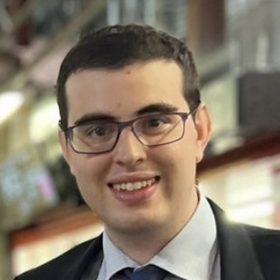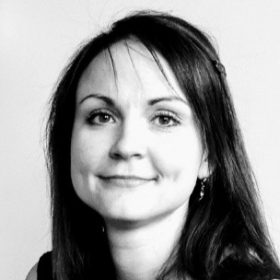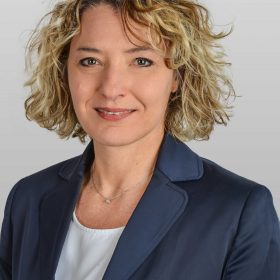
Main Conference Day 1:
Thursday 18th May
08.00 – 09.00: Registration and Morning Welcome Coffee
09.00 – 09.45: Generative Deep Learning in Quant Finance

Andrew Green:
Andrew Green: Managing Director and Lead GFI Quant, Scotiabank
Andrew Green is a Managing Director and lead XVA Quant at Scotiabank in London. Prior to joining Scotiabank, Andrew held roles as a quantitative analysis in several different banks in London. He is the author of XVA: Credit, Funding and Capital Valuation Adjustments, published by Wiley.
09.45 – 10.30: Autoencoder Market Models for Interest Rates

Alexander Sokol:
Executive Chairman and Head of Quant Research, CompatibL
Alexander Sokol: Executive Chairman and Head of Quant Research, CompatibL
Alexander Sokol is the founder, Executive Chairman, and Head of Quant Research at CompatibL, a trading and risk technology company. He is also the co-founder of Numerix, where he served as CTO from 1996 to 2003, and the co-founder of Duality Group, where he served as CTO from 2017 to 2020.
Alexander won the Quant of the Year Award in 2018 together with Leif Andersen and Michael Pykhtin, for their joint work revealing the true scale of the settlement gap risk that remains even in the presence of initial margin. Alexander’s other notable research contributions include systemic wrong-way risk (with Michael Pykhtin, Risk Magazine), joint measure models, and the local price of risk (with John Hull and Alan White, Risk Magazine), and mean reversion skew (Risk Books, 2014).
Alexander earned his BA from the Moscow Institute of Physics and Technology at the age of 18, and a PhD from the L. D. Landau Institute for Theoretical Physics at the age of 22. He was the winner of the USSR Academy of Sciences Medal for Best Student Research of the Year in 1988.
10.30 – 11.00: Morning Break and Networking Opportunities
11.00 – 11.45: Derivatives Pricing with Sobolev Deep Learning
- Motivation: Fast and Stable Deep Learning
- An Introduction to Sobolev Deep Learning Universal Representation
- Theorem on Sobolev Spaces
- Practical Numerical Implementation Applications

Youssef Elouerkhaoui:
Managing Director, Global Head of Markets Quantitative Analysis, Citi
Youssef Elouerkhaoui: Managing Director, Global Head of Markets Quantitative Analysis, Citi
Youssed Elouerkhaoui is the global Head of Credit Quantitive Analysis at Citi. His group supports all aspects of modelling and product development across desks, thais includes: Flow Credit Trading, Correlation Trading, CDOs, Exotics and Emering Markets.
He also supports CVA, Funding and Regulatory Capital for Credit Markets. Prior to this, he was a Director in the Fixed Income Derivatives Quantitative Research Group at UBS, where he was in charge of developing and implementing models for the Structured Credit Desk. Before joining UBS, Youssef was a Quantitative Research Analyst at Credit Lyonnais supporting the Interest Rates Exotics business. He has also worked as a Senior Consultant in the Risk Analytics and Research Group at Ernst & Young. He is a graduate of Ecole Centrale Paris and he holds a PhD in Mathematics from Paris-Dauphine University.
11.45 – 12.30: Model-Agnostic Pricing of Exotic Derivatives Using Signatures

Andrew Alden
PhD student, Mathematical and Computational Finance, King’s College London
Andrew Alden: PhD student, Mathematical and Computational Finance, King’s College London
Andrew is a PhD student in Computer Science at King’s College London. His research interests fall within the intersection of AI, rough path theory, and quantitative finance. His current work focuses on pricing exotic derivatives using the path signature and deep learning. He is also a visiting student at the Oxford-Man Institute of Quantitative Finance. Andrew obtained his M.Sc. in Mathematics and Finance from Imperial College London and graduated with a B.Sc. (Hons) in Computing Science and Mathematics from the University of Malta. Andrew interned at the Global Markets Data & AI Lab of BNP Paribas in London and at Deloitte in Malta.

Blanka Horvath:
Associate Professor in Mathematical and Computational Finance, University of Oxford
Blanka Horvath: Associate Professor in Mathematical and Computational Finance, University of Oxford and Researcher, The Alan Turing Institute
Blanka research interests are in the area of Stochastic Analysis and Mathematical Finance.
Including asymptotic and numerical methods for option pricing, smile asymptotics for local- and stochastic volatility models (the SABR model and fractional volatility models in particular), Laplace methods on Wiener space and heat kernel expansions.
Blanka completed her PhD in Financial Mathematics at ETHZürich with Josef Teichmann and Johannes Muhle-Karbe. She holds a Diploma in Mathematics from the University of Bonn and an MSc in Economics from the University of Hong Kong.

Gordon Lee:
Head of XVA and Derivatives Quantitative Analytics, BNY Mellon
Gordon Lee: Head of XVA and Derivatives Quantitative Analytics, BNY Mellon
12.30 – 13.30: Lunch
13.30 – 14.15: The Future of Asset Allocation: Exploring the Potential of Language AI
Abstract: In this presentation, we’ll explore the potential of language AI in asset allocation. We’ll discuss how real-time news analytics can navigate the business cycles and aid in asset-class rotation, and how sentiment analysis can inform sector selection strategies, with the added layer of corporate controversy filters. Understanding the capabilities of language AI in asset allocation can equip us to make better-informed investment decisions and augment market timing abilities.

Peter Hafez:
Chief Data Scientist, RavenPack
Peter Hafez: Chief Data Scientist, RavenPack
Peter Hafez is the head of data science at RavenPack. Since joining RavenPack in 2008, he’s been a pioneer in the field of applied news analytics bringing alternative data insights to the world’s top banks and hedge funds. Peter has more than 15 years of experience in quantitative finance with companies such as Standard & Poor’s, Credit Suisse First Boston, and Saxo Bank.
He holds a Master’s degree in Quantitative Finance from Sir John Cass Business School along with an undergraduate degree in Economics from Copenhagen University. Peter is a recognized speaker at quant finance conferences on alternative data and AI, and has given lectures at some of the world’s top academic institutions including London Business School, Courant Institute of Mathematics at NYU, and Imperial College London.
14.15 – 15.00: Distributional Imputation for Volatility Surfaces using Variational Autoencoders
Abstract: We review the usage of variational autoencoders (VAEs) for imputing FX volatility surfaces, discuss common misconceptions and misuses of VAEs, the importance of architecture, and finally how to use VAEs for imputing with uncertainties.

Achintya Gopal:
Machine Learning Quant Researcher, Bloomberg
Achintya Gopal: Machine Learning Quant Researcher, Bloomberg
Achintya Gopal is a Machine Learning Quant Researcher in the Quantitative Research group in the Office of the CTO at Bloomberg, where he works on applying machine learning within the financial domain. Prior to that, he worked on estimating carbon emissions using machine learning, developing new models in normalizing flows, and exploring new methods to evaluate statistical models with model uncertainty. More recently, he has been working on a variety of projects ranging from volatility modeling using neural networks, causal inference for investing, generative models in differential privacy, active learning for NLP, and the interpretability of large language models.
15.00 – 15.30: Afternoon Break and Networking Opportunities
15.30 – 16.15: Semi-Analytic Conditional Expectations and Applications
We introduce a data driven and model free approach for computing conditional expectations. The new method combines Gaussian Mean Mixture models with classic analytic techniques based on the properties of the Gaussian distribution. As applications we consider
- Proxy hedges
- Bermudan options
- Stochastic Local Volatility
- Forward Backward Stochastic Differential Equations

Jörg Kienitz:
Quantitative Finance and Machine Learning, Acadiasoft
Jörg Kienitz: Quantitative Finance and Machine Learning (Acadiasoft), Partner (Quaternion), Adjunct Prof (UCT), Assistant Prof (BUW)
Jörg Kienitz is a partner at Quaternion, Acadia’s Quant Services division. He owns the finciraptor.de website – an educational platform for Quantitative Finance and Machine Learning. Jörg consults on the development, implementation, and validation of quantitative models. He is an Assistant Professor at the University of Wuppertal and an Adjunct Associate Professor in AIFMRM at the University of Cape Town. He regularly addresses major conferences, including Quant Minds, RISK or the WBS Quant Conference. Jörg has authored four books, Monte Carlo Frameworks (with Daniel J. Duffy), Financial Modelling (with Daniel Wetterau), and Interest Rate Derivatives Explained I and II (with Peter Caspers). He also co-authored research articles that appeared in leading journals like Quantitative Finance, RISK or Mathematics in Industry.
16.15 – 17.00: Risk Analytics in the Age of AI, with a case study on wrong way risk
Abstract: The field of Risk Analytics is long overdue for deep renewal, and the introduction of AGI platforms is poised to act as a catalyst for this change. We will explore a case-study on Clearing Analytics, including a discussion of margin models, wrong-way-risk add-ons, hypothetical scenarios, default fund contributions, reverse stress testing, market data analytics, and firm valuation. Additionally, we will delve into how LLMs and new mathematical and software engineering technologies are expected to revolutionize the risk-analytics domain. We will focus primarily on Clearing House analytics, but similar considerations extend to banking, insurance, and buy-side investment houses alike.

Claudio Albanese:
Founder, Global Valuation
Claudio Albanese: Founder, Global Valuation
17.00 – 18.00: AI and ML in Quant Finance Panel
Large Language Models (LLM) in quant finance – a gimmick or a game changer?
- Will LLMs revolutionize fundamental analysis?
- Will LLMs revolutionize sentiment analysis?
- Will LLMs enable the use of alternative data in new ways?
- Does LLMs have a role in integrating ESG in the investment process?
ML models for valuation, XVA, and risk
- How to build trustworthy ML quant models that auditors and regulators will approve
- Due to the lack of sufficient training data, is ML in quant models truly learning or only providing a better way to interpolate
Moderator:

Alexander Sokol:
Executive Chairman and Head of Quant Research, CompatibL
Alexander Sokol: Executive Chairman and Head of Quant Research, CompatibL
Alexander Sokol is the founder, Executive Chairman, and Head of Quant Research at CompatibL, a trading and risk technology company. He is also the co-founder of Numerix, where he served as CTO from 1996 to 2003, and the co-founder of Duality Group, where he served as CTO from 2017 to 2020.
Alexander won the Quant of the Year Award in 2018 together with Leif Andersen and Michael Pykhtin, for their joint work revealing the true scale of the settlement gap risk that remains even in the presence of initial margin. Alexander’s other notable research contributions include systemic wrong-way risk (with Michael Pykhtin, Risk Magazine), joint measure models, and the local price of risk (with John Hull and Alan White, Risk Magazine), and mean reversion skew (Risk Books, 2014).
Alexander earned his BA from the Moscow Institute of Physics and Technology at the age of 18, and a PhD from the L. D. Landau Institute for Theoretical Physics at the age of 22. He was the winner of the USSR Academy of Sciences Medal for Best Student Research of the Year in 1988.

Blanka Horvath:
Associate Professor in Mathematical and Computational Finance, University of Oxford
Blanka Horvath: Associate Professor in Mathematical and Computational Finance, University of Oxford and Researcher, The Alan Turing Institute
Blanka research interests are in the area of Stochastic Analysis and Mathematical Finance.
Including asymptotic and numerical methods for option pricing, smile asymptotics for local- and stochastic volatility models (the SABR model and fractional volatility models in particular), Laplace methods on Wiener space and heat kernel expansions.
Blanka completed her PhD in Financial Mathematics at ETHZürich with Josef Teichmann and Johannes Muhle-Karbe. She holds a Diploma in Mathematics from the University of Bonn and an MSc in Economics from the University of Hong Kong.

Gordon Lee:
Head of XVA and Derivatives Quantitative Analytics, BNY Mellon
Gordon Lee: Head of XVA and Derivatives Quantitative Analytics, BNY Mellon

Jörg Kienitz:
Quantitative Finance and Machine Learning, Acadiasoft
Jörg Kienitz: Quantitative Finance and Machine Learning (Acadiasoft), Partner (Quaternion), Adjunct Prof (UCT), Assistant Prof (BUW)
Jörg Kienitz is a partner at Quaternion, Acadia’s Quant Services division. He owns the finciraptor.de website – an educational platform for Quantitative Finance and Machine Learning. Jörg consults on the development, implementation, and validation of quantitative models. He is an Assistant Professor at the University of Wuppertal and an Adjunct Associate Professor in AIFMRM at the University of Cape Town. He regularly addresses major conferences, including Quant Minds, RISK or the WBS Quant Conference. Jörg has authored four books, Monte Carlo Frameworks (with Daniel J. Duffy), Financial Modelling (with Daniel Wetterau), and Interest Rate Derivatives Explained I and II (with Peter Caspers). He also co-authored research articles that appeared in leading journals like Quantitative Finance, RISK or Mathematics in Industry.

Peter Hafez:
Chief Data Scientist, RavenPack
Peter Hafez: Chief Data Scientist, RavenPack
Peter Hafez is the head of data science at RavenPack. Since joining RavenPack in 2008, he’s been a pioneer in the field of applied news analytics bringing alternative data insights to the world’s top banks and hedge funds. Peter has more than 15 years of experience in quantitative finance with companies such as Standard & Poor’s, Credit Suisse First Boston, and Saxo Bank.
He holds a Master’s degree in Quantitative Finance from Sir John Cass Business School along with an undergraduate degree in Economics from Copenhagen University. Peter is a recognized speaker at quant finance conferences on alternative data and AI, and has given lectures at some of the world’s top academic institutions including London Business School, Courant Institute of Mathematics at NYU, and Imperial College London.
18.00 – 19.30: Drinks Reception
08.00 – 09.00: Registration and Morning Welcome Coffee
09.00 – 09.45: Latest FRTB Update

Adolfo Montoro:
Director, Global Market Risk Analytics, Bank of America
Adolfo Montoro: Director, Global Market Risk Analytics, Bank of America
Adolfo Montoro FRM, is a director in the Global Market Risk Analytics, Bank of America in London. Previously he lead the Market Data Strategy and Analytics team and represented Deutsche Bank in the Industry FRTB Working Group supporting elements of the FRTB implementation and advocacy for the Bank over the last five years. Previously he has been in charge of the Strategic implementation of Full Revaluation-based suite of VaR model ensuring as well the adequacy of quantitative methodologies used for market risk management and regulatory purposes (Pillar I and II). He has earned an MSc in Risk Management from Bocconi University, Italy, and graduated with a degree in economics (with honours) from Universita’ della Calabria, Italy. He has earned his Financial Risk Manager (FRM) certification in 2005. Adolfo is currently affiliated with the Global Association of Risk Professionals, where he serves both as a Regional Director for the UK Chapter as well as member of the FRM Committee.
09.45 – 10.30: Counting jumps: an analysis of different waiting time distributions. Applications in Finance.
Co-authored with Gianluca Fusai and Daniele Marazzina.

Laura Ballotta:
Prof. of Mathematical Finance, Bayes Business School (formerly Cass)
Laura Ballotta: Prof. of Mathematical Finance, Bayes Business School (formerly Cass)
Dr Ballotta works in the areas of quantitative finance and risk management. She has written on topics including stochastic modelling for financial valuation and risk management, numerical methods aimed at supporting financial applications, and the interplay between finance and insurance.
Recent major contributions have appeared in Journal of Financial and Quantitative Analysis, European Journal of Operational Research and Quantitative Finance among others.
She serves as associate editor and referee for a number of international journals in the field.
Laura Ballotta obtained her PhD in Mathematical and Computational Methods for Economics and Finance from the Università degli Studi di Bergamo (Italy), following her BSc in Economics from Università Cattolica del Sacro Cuore, Piacenza (Italy), and MSc in Financial Mathematics from the University of Edinburgh – jointly awarded with Heriot-Watt University (UK). Laura has previously held positions at Università Cattolica del Sacro Cuore, Piacenza (Italy), and Department of Actuarial Science and Statistics, City University London (UK).
10.30 – 11.00: Morning Break and Networking Opportunities
11.00 – 11.45: Leveraged Wrong-Way Risk
We introduce a simple model for the credit exposure to leveraged and collateralized counter-parties. Wrong-way risk is captured by linking the counter-party default probability directly to changes in the portfolio value. This applies e.g. to leveraged firms such as hedge funds where large collateral calls can be the driver of default. We show that our model is able to reproduce the large losses observed in recent events. These losses were unexpected based on typical exposure models which neglect the relatedness of large market moves and the viability of the counter-party. Our model is intuitive to parameterize and straightforward to implement and thus provides a useful tool for assessing the credit risk inherent in leveraged portfolios.

Matthias Arnsdorf:
Global head of Counterparty Credit Risk Quantitative Research, J.P. Morgan
Matthias Arnsdorf: Global head of Counterparty Credit Risk Quantitative Research, J.P. Morgan
Since 2012 Matthias has been heading the counterparty credit risk quantitative research team globally.
His main responsibilities include the development & support of J.P. Morgan’s suite of credit exposure models which are used for valuation and risk management as well as credit capital.
Prior to his work in credit risk, Matthias headed the market risk capital modelling effort in EMEA for two years. Matthias started his career in finance in 2002 as a credit derivatives quantitative researcher at UBS and J.P.Morgan.
Matthias holds a PhD in Quantum Gravity from Imperial College London and has spent two years as a post-doctoral researcher at the Niels Bohr Institute in Copenhagen prior to his move to quantitative finance.
11.45 – 12.30: Modeling Yield Curves with Factor HJM
We present a new interest rate modeling framework based on the factor modeling approach widely used to model yield curves in real-world applications. The new modeling framework is very attractive as it combines the simplicity, intuitiveness, and computational efficiency of the factor modeling approach with the rigor of no-arbitrage term structure pricing models.

Andrei Lyashenko:
Head of Market Risk and Pricing Models, Quantitative Risk Management (QRM), Inc.
Andrei Lyashenko: Head of Market Risk and Pricing Models, Quantitative Risk Management (QRM), Inc.
Andrei Lyashenko is the head of Market Risk and Pricing Models at the Quantitative Risk Management (QRM), Inc. in Chicago. His team is responsible for research, implementation and support of pricing and risk models across multiple asset classes. In November 2019, he was awarded the prestigious Quant of the Year award, jointly with Fabio Mercurio from Bloomberg, L.P., for their Risk Magazine paper on modeling backward-looking rates.
Andrei is also adjunct professor at the Illinois Institute of Technology. Before joining the QRM in 1997, Andrei was on the mathematical faculty at the University of Illinois at Chicago and Iowa State University. Prior to coming to the US, he conducted academic research in applied math in Russia, Japan and Italy and published numerous research papers in the area of fluid stability in major mathematical journals. He holds a BSc in Mathematics from the Novosibirsk State University, Russia and a PhD in Mathematics from the Russian Academy of Science.
12.30 – 13.30: Lunch
13.30 – 14.15: Joint Modelling of CMS rates in a Risk-Free Rate framework

Elias Daboussi:
Quantitative Analyst, Bank of America Merrill Lynch
Elias Daboussi: Quantitative Analyst, Bank of America Merrill Lynch
Elias Daboussi is a quantitative analyst at Bank of America since 2016. After graduating from University Paris-Diderot and Supelec in 2014, he has specialized in the Rates and Hybrids area, first in the Model Risk Management Group, and now as part of the Quantitative Strategies Group.
14.15 – 15.00: Efficient Valuation of Mid-curve Swaptions
Abstract: We consider a model for midcurves that that respects relevant swaption skews, allows a flexible correlation structure and accounts for the stochasticity of annuities. Furthermore, we present a method to evaluate the model efficiently.

Wen Jiang
Executive Director, Head of Structured Rates Quantitative Research, Nomura
Wen Jiang: Executive Director, Head of Structured Rates Quantitative Research, Nomura
After completing a D.Phil. in Mathematics from Oxford, Wen has worked at Lehman Brothers and Morgan Stanley, and has been at Nomura since 2009. He leads the Structured Rates Quant team in Nomura Global Markets, based in London.
15.00 – 15.30: Afternoon Break and Networking Opportunities
15.30 – 16.15: Analytic RFR Option Pricing with Smile and Skew

Colin Turfus:
Quantitative Analyst, Deutsche Bank
Colin Turfus: Quantitative Analyst, Deutsche Bank
Colin Turfus has worked for the last twelve years as a financial engineer, mainly analysing model risk for credit derivatives and hybrids. More recently his interest has been in the application of perturbation methods to risk management, finding efficient analytic methods for computing, e.g., CVA, VaR and model risk. He is currently working in Global Model Validation and Governance at Deutsche Bank. He also taught evening courses on C++ and Financial Engineering at City University for seven years. Prior to that Colin worked as a developer consultant in the mobile phone industry after an extended period in academia, teaching applied maths and researching in fluid dynamics and turbulent dispersion.
16.15 – 17.00: Collateralised Exposure Modelling: Bridging the Gap Risk

Fabrizio Anfuso:
Traded Risk Measurement, PRA, Bank of England
Fabrizio Anfuso: Traded Risk Measurement, PRA, Bank of England
Fabrizio is a leading expert in developing complex risk analytics, quantitative modelling and financial regulations. He has an extensive track-record of heading quant teams onshore and offshore, as well as of taking part in firm-wide programs, such as IMM, BCBS-IOSCO Margin Requirements and IBOR transition.
In his present and previous roles, Fabrizio has gained a comprehensive knowledge of the full model development cycle, including the model design, the validation of model performance, the IT implementation and the attainment of regulatory compliance.
His main areas of expertise are Counterparty credit risk, Monte Carlo simulations, Internal Models for the trading book (IMM and IMA), derivatives pricing, CCPs & collateral modelling, Initial Margin methodologies and regulatory capital.
Fabrizio is chairing the master’s course in Counterparty Credit Risk of the ETH / University of Zurich and taught a number of advanced professional trainings in topics such as CCR, capital management and Initial Margin methodologies.
As part of his academic activities, he has authored numerous research articles in the fields of quantitative finance and condensed matter physics. Fabrizio holds a Ph.D. in Theoretical Physics from the Chalmers University of Technology (Gothenburg, Sweden).
17.00 – 18.00: AI and ML in Quant Finance Panel
Large Language Models (LLM) in quant finance – a gimmick or a game changer?
- Will LLMs revolutionize fundamental analysis?
- Will LLMs revolutionize sentiment analysis?
- Will LLMs enable the use of alternative data in new ways?
- Does LLMs have a role in integrating ESG in the investment process?
ML models for valuation, XVA, and risk
- How to build trustworthy ML quant models that auditors and regulators will approve
- Due to the lack of sufficient training data, is ML in quant models truly learning or only providing a better way to interpolate
Moderator:

Alexander Sokol:
Executive Chairman and Head of Quant Research, CompatibL
Alexander Sokol: Executive Chairman and Head of Quant Research, CompatibL
Alexander Sokol is the founder, Executive Chairman, and Head of Quant Research at CompatibL, a trading and risk technology company. He is also the co-founder of Numerix, where he served as CTO from 1996 to 2003, and the co-founder of Duality Group, where he served as CTO from 2017 to 2020.
Alexander won the Quant of the Year Award in 2018 together with Leif Andersen and Michael Pykhtin, for their joint work revealing the true scale of the settlement gap risk that remains even in the presence of initial margin. Alexander’s other notable research contributions include systemic wrong-way risk (with Michael Pykhtin, Risk Magazine), joint measure models, and the local price of risk (with John Hull and Alan White, Risk Magazine), and mean reversion skew (Risk Books, 2014).
Alexander earned his BA from the Moscow Institute of Physics and Technology at the age of 18, and a PhD from the L. D. Landau Institute for Theoretical Physics at the age of 22. He was the winner of the USSR Academy of Sciences Medal for Best Student Research of the Year in 1988.

Blanka Horvath:
Associate Professor in Mathematical and Computational Finance, University of Oxford
Blanka Horvath: Associate Professor in Mathematical and Computational Finance, University of Oxford and Researcher, The Alan Turing Institute
Blanka research interests are in the area of Stochastic Analysis and Mathematical Finance.
Including asymptotic and numerical methods for option pricing, smile asymptotics for local- and stochastic volatility models (the SABR model and fractional volatility models in particular), Laplace methods on Wiener space and heat kernel expansions.
Blanka completed her PhD in Financial Mathematics at ETHZürich with Josef Teichmann and Johannes Muhle-Karbe. She holds a Diploma in Mathematics from the University of Bonn and an MSc in Economics from the University of Hong Kong.

Gordon Lee:
Head of XVA and Derivatives Quantitative Analytics, BNY Mellon
Gordon Lee: Head of XVA and Derivatives Quantitative Analytics, BNY Mellon

Jörg Kienitz:
Quantitative Finance and Machine Learning, Acadiasoft
Jörg Kienitz: Quantitative Finance and Machine Learning (Acadiasoft), Partner (Quaternion), Adjunct Prof (UCT), Assistant Prof (BUW)
Jörg Kienitz is a partner at Quaternion, Acadia’s Quant Services division. He owns the finciraptor.de website – an educational platform for Quantitative Finance and Machine Learning. Jörg consults on the development, implementation, and validation of quantitative models. He is an Assistant Professor at the University of Wuppertal and an Adjunct Associate Professor in AIFMRM at the University of Cape Town. He regularly addresses major conferences, including Quant Minds, RISK or the WBS Quant Conference. Jörg has authored four books, Monte Carlo Frameworks (with Daniel J. Duffy), Financial Modelling (with Daniel Wetterau), and Interest Rate Derivatives Explained I and II (with Peter Caspers). He also co-authored research articles that appeared in leading journals like Quantitative Finance, RISK or Mathematics in Industry.

Peter Hafez:
Chief Data Scientist, RavenPack
Peter Hafez: Chief Data Scientist, RavenPack
Peter Hafez is the head of data science at RavenPack. Since joining RavenPack in 2008, he’s been a pioneer in the field of applied news analytics bringing alternative data insights to the world’s top banks and hedge funds. Peter has more than 15 years of experience in quantitative finance with companies such as Standard & Poor’s, Credit Suisse First Boston, and Saxo Bank.
He holds a Master’s degree in Quantitative Finance from Sir John Cass Business School along with an undergraduate degree in Economics from Copenhagen University. Peter is a recognized speaker at quant finance conferences on alternative data and AI, and has given lectures at some of the world’s top academic institutions including London Business School, Courant Institute of Mathematics at NYU, and Imperial College London.
